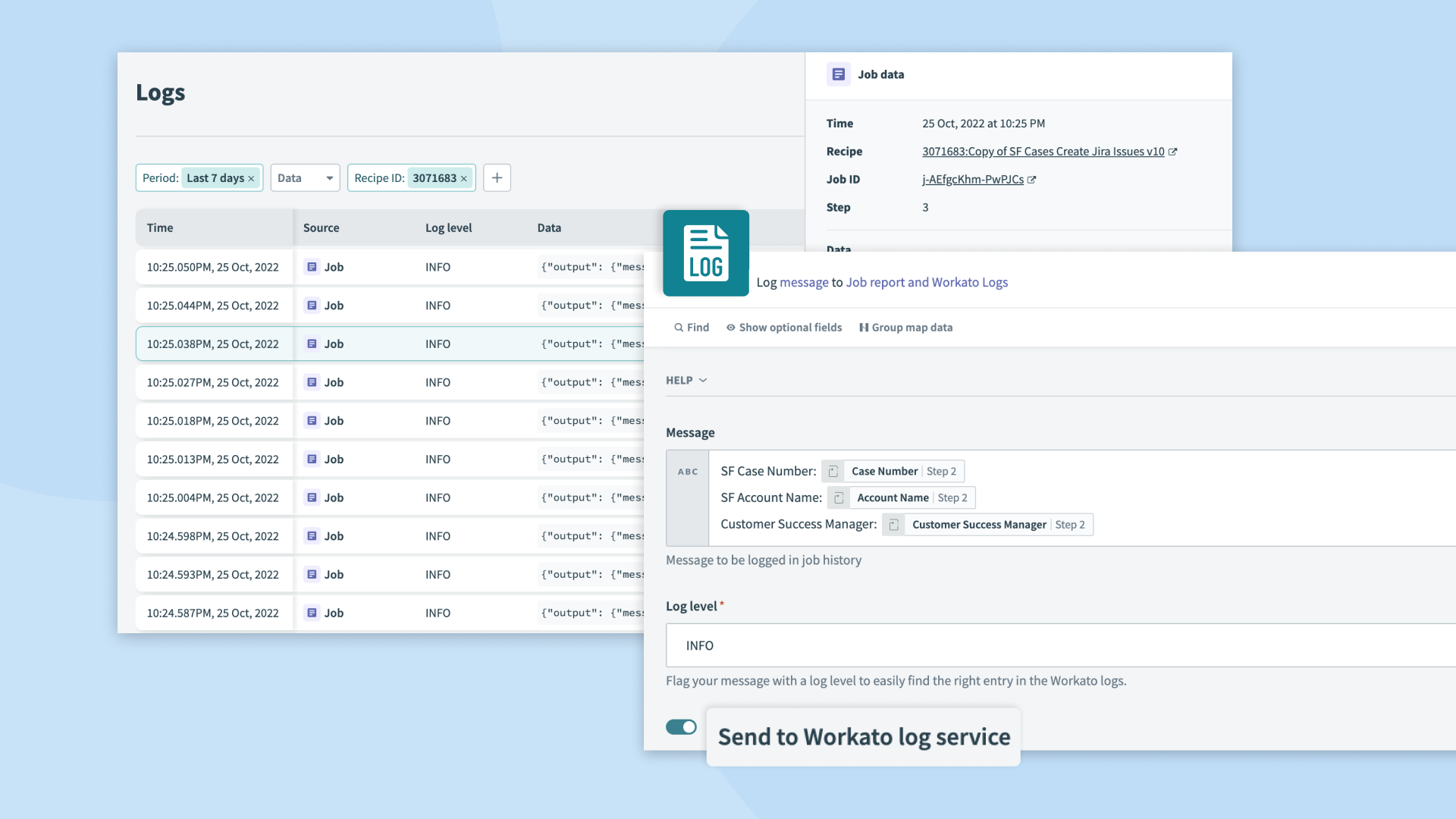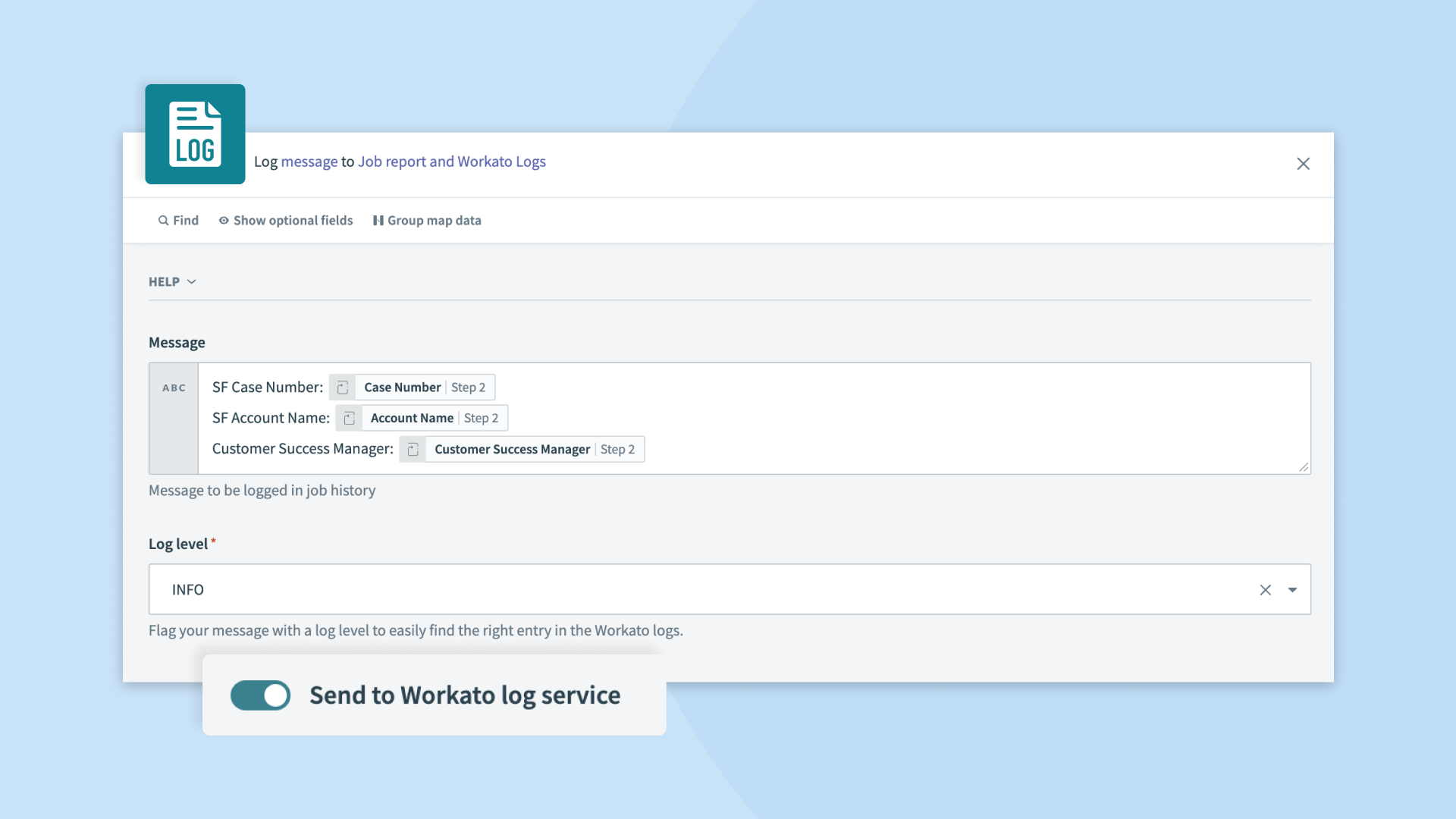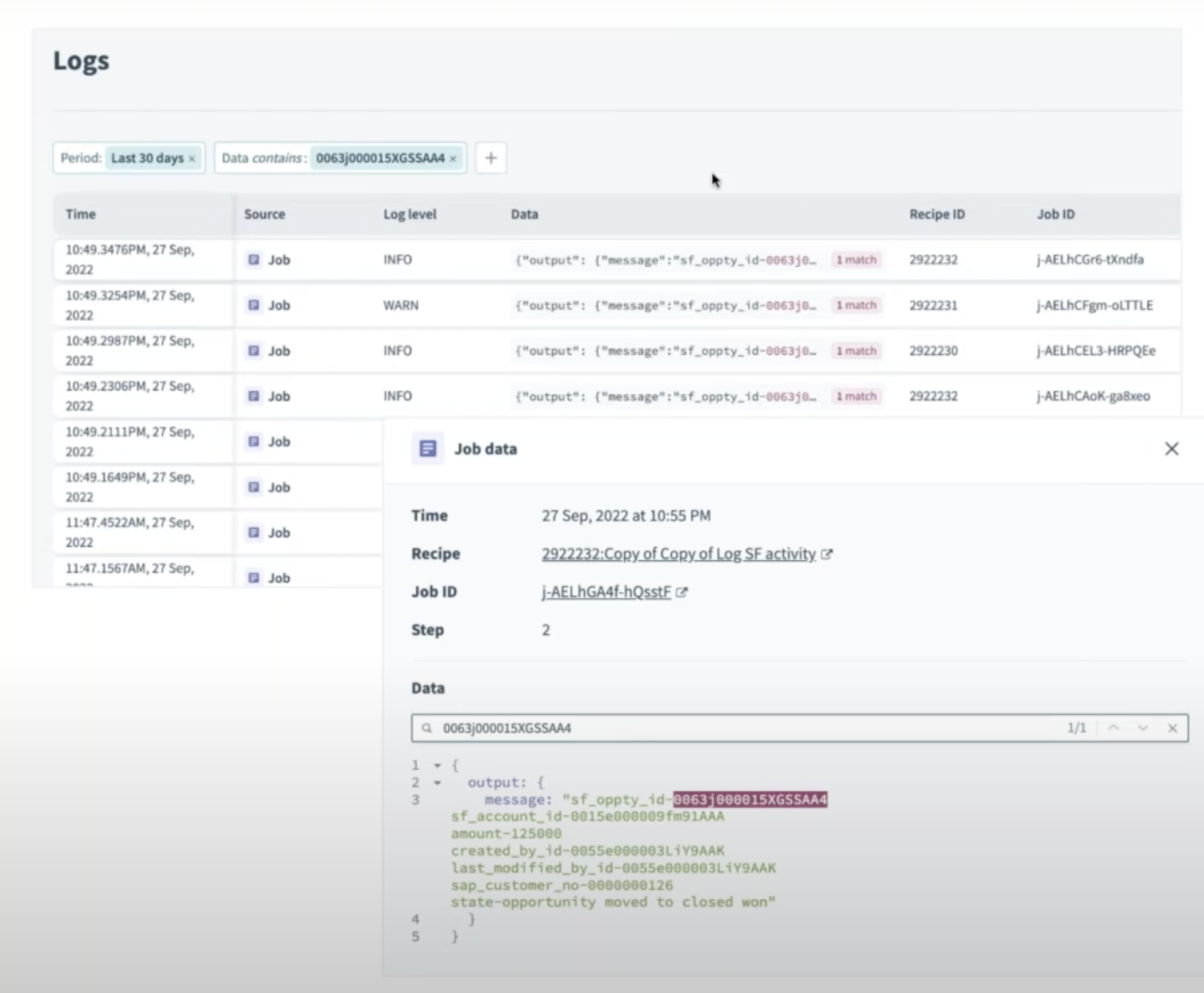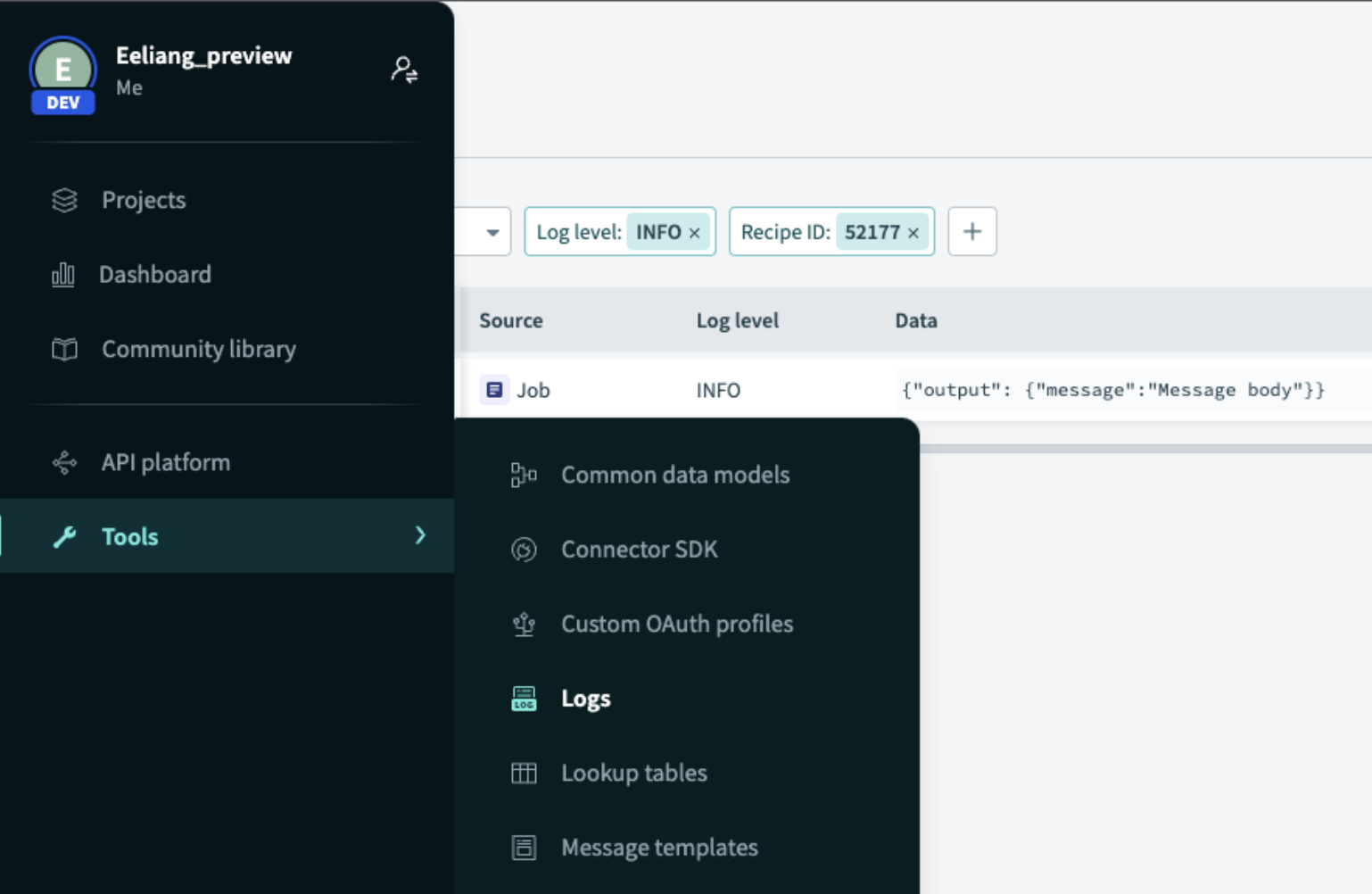Workato Logging Service: Audit and troubleshoot batch processes faster

What is Workato Logging Service
Workato Logging Service is a centralized log storage of all your activities across the Workato platform. This may include job-level details of recipes, webhook errors, trigger errors etc. With search capabilities, it is also an easy way for you to filter through different automations and services that you have running in Workato, making it an essential tool for testing, auditing, troubleshooting, and debugging
Why Workato Logging Service
Below, we will look at the benefits of using Workato logging service — why did we put in the time and effort to build this?
Centralized view of all activities
As Workato logging service is a native feature in the Workato platform, it allows you to track all your activities on a single page as you are building, testing and troubleshooting your automation with zero infrastructure setup.
More visibility into batch processes
Previously, steps that are repeated in a loop are not fully visible from the job reports, as only the last execution of that step is displayed.
With Workato logging service, all iterations of steps within recipe loops become visible and searchable. This ability to see record-level data makes it easier to troubleshoot and debug automations that involve batch processes.
Increased traceability of each record
Being able to have a centralized view allows you to analyze the different dependencies that are affecting particular records by analyzing the lifecycle of a record as it gets processed over time in multiple recipes and jobs.
How to use Workato Logging Service
There are 2 parts to using Workato Logging service:
- Creating the log — send logs from different recipes and jobs to the centralized logging service
- Viewing the log — view all your logs in a centralized view
Creating the log
Creating the log involves sending logs from different recipes and jobs to the centralized logging service, and adding relevant log-level tags for different types of log entries e.g. errors vs job details.
To do so, turn on the Send to Workato log service toggle in your recipe editor and flag your message with a log level to easily find the right entry in the logs page.

Sending logs to Workato logging service
Viewing the log
After sending the logs to a centralize platform, you should be able to view them in a centralized view through our logs page. In here, you can filter entries by log level, recipe ID, job ID, and step number. You can also text search across your log data. This allows you to search, audit, and troubleshoot different parts of your recipe.

Logs page
Where to find the Workato Logs Page
Navigate to Tools > Logs.

How to access Workato Log Page
How to Audit and troubleshoot batch processes faster with Workato Logging Service
As mentioned above, Workato logging service makes it easier to troubleshoot and debug steps which are nested within a loop by providing visibility into each iteration of repeated steps in a batch process.
Below, you will find a step-by-step tutorial on how to use Workato logging service to access data from each record in a batch.
Learn more about Workato Logging Service
Read the full documentation on Workato logging service to learn more about the feature. Alternatively, you can dive in-depth into the feature by watching our Product Hour: Advanced operations with Workato Logging Service.